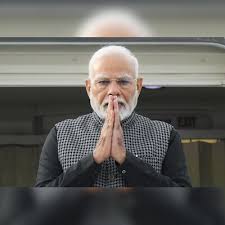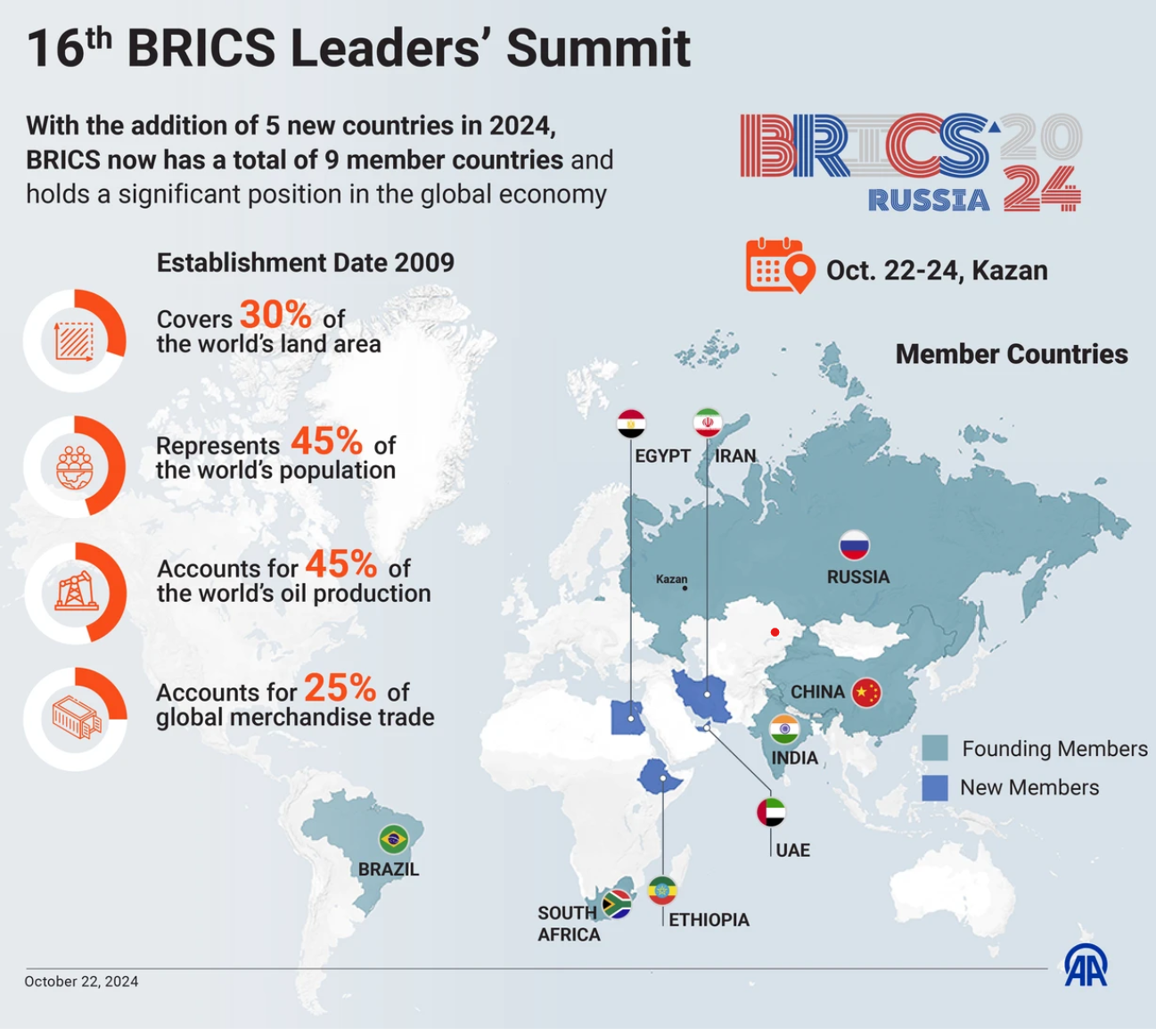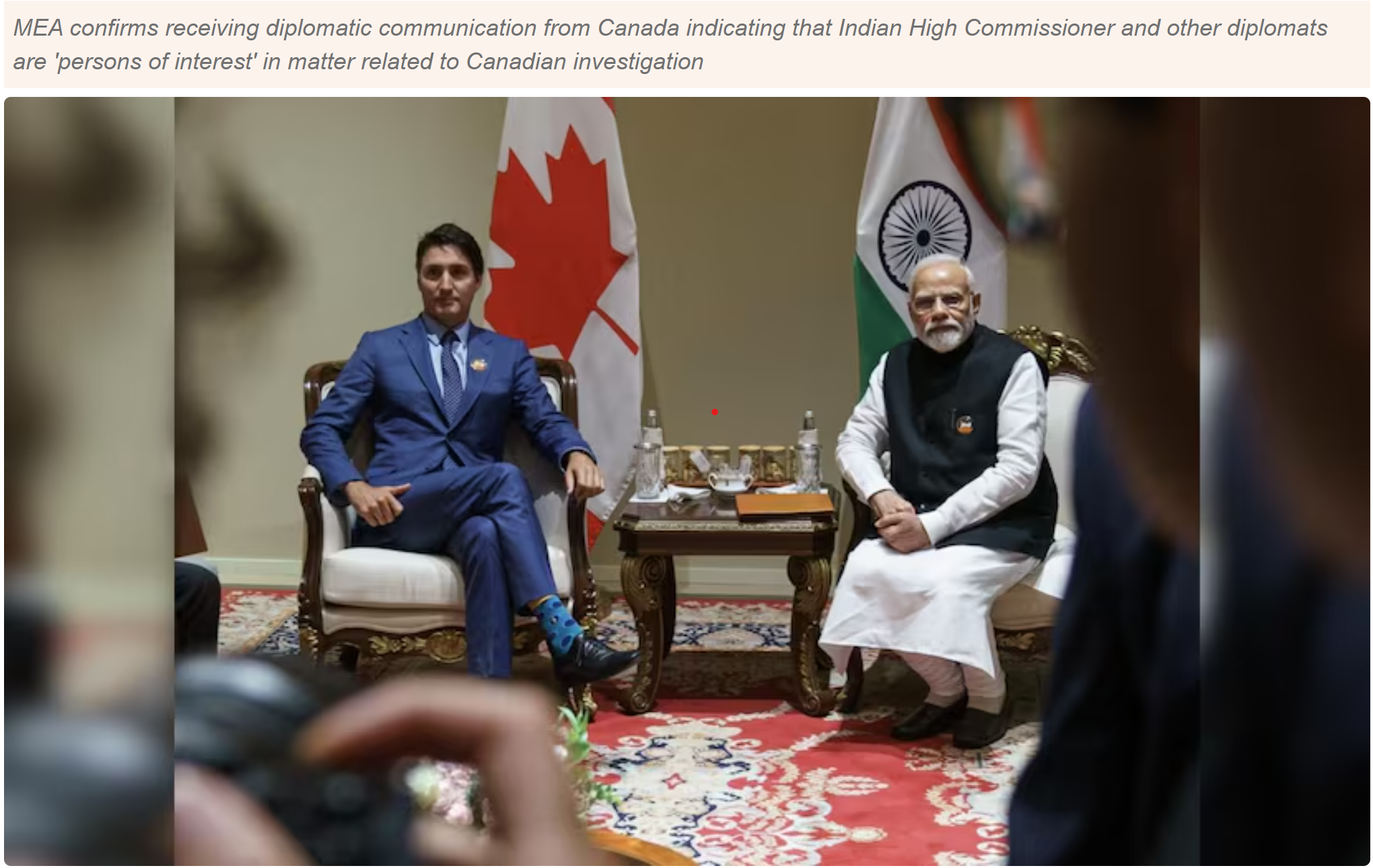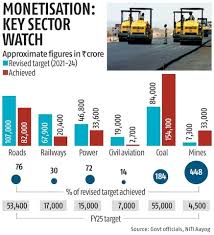India's Gig Economy: Growth and Impact on Employment

- 03 Dec 2024
Introduction
India’s gig economy is experiencing rapid growth, with projections indicating it will significantly contribute to the national economy and employment generation. A recent report by the Forum for Progressive Gig Workers estimates the gig economy could reach $455 billion by the end of 2024, growing at a 17% compounded annual growth rate (CAGR). By 2030, it may add 1.25% to India’s GDP and create 90 million jobs.
What is the Gig Economy?
- Definition: The gig economy refers to a labor market based on short-term, flexible jobs, typically facilitated by digital platforms. Gig workers, also called freelancers or independent contractors, are compensated for each task they complete.
- Key Features:
- Flexibility in work schedule and location.
- Task-based employment through digital platforms.
- Common sectors: e-commerce, transportation, delivery services, and freelance work.
Status of the Gig Economy in India
- Market Growth:
- In 2020-21, India had 7.7 million gig workers, which is expected to grow to 23.5 million by 2029-30.
- Key sectors contributing to growth include e-commerce, transportation, and delivery services.
- Driving Factors:
- Digital Penetration: With over 936 million internet subscribers and 650 million smartphone users, digital infrastructure is a key enabler of the gig economy.
- Startup and E-commerce Growth: The rise of startups and e-commerce platforms has increased demand for flexible labor.
- Changing Work Preferences: Younger generations seek work-life balance, opting for flexible gig work.
Gig Economy and Employment Generation
- Contribution to GDP: The gig economy is expected to contribute 1.25% to India’s GDP by 2030.
- Job Creation:
- The gig economy could create up to 90 million jobs by 2030.
- It is estimated that by 2030, gig workers will comprise 4.1% of India’s total workforce.
- Benefits:
- Women’s Empowerment: Gig work provides financial independence and flexibility, especially benefiting women in the workforce.
- Regional Growth: Tier-II and Tier-III cities are seeing accelerated growth in gig work opportunities.
Challenges Faced by Gig Workers
- Job Insecurity: Many gig workers experience instability in their employment, especially in low-skilled jobs.
- Income Volatility: Earnings are unpredictable, and workers face difficulty in financial planning.
- Regulatory Gaps: There is no comprehensive legal framework to protect gig workers’ rights and ensure fair working conditions.
- Delayed Payments: A significant number of workers face delayed payments, affecting their financial well-being.
- Skill Development: Many workers report a lack of opportunities for career advancement and skill development.
Government Initiatives for Gig Workers
- Code on Social Security, 2020: Recognizes gig workers and aims to extend social security benefits, though it lacks comprehensive coverage.
- e-Shram Portal & Welfare Schemes: Initiatives like Pradhan Mantri Shram Yogi Maandhan Yojana and PMJJBY aim to provide financial security to gig workers.
- State-level Initiatives:
- Rajasthan’s Platform-Based Gig Workers Act (2023) focuses on registration and welfare.
- Karnataka’s bill mandates formal registration and grievance mechanisms.
The Way Forward
- Legal Reforms: India can draw from international models like California and the Netherlands, where gig workers are reclassified as employees to ensure protections such as minimum wages and regulated working hours.
- Portable Benefits System: Implementing a system where gig workers can access benefits like healthcare and retirement plans regardless of their employer.
- Skill Development: Strengthening collaborations with vocational institutions to enhance skills and improve earning potential.
- Technological Solutions: Establishing robust feedback mechanisms for workers to report exploitation and ensure fairness within the gig economy.
Conclusion
The gig economy in India is poised to become a significant driver of economic growth and job creation. However, addressing challenges such as income volatility, job insecurity, and regulatory gaps is crucial to ensuring sustainable growth.
Inter-State Council

- 14 Nov 2024
In News:
The Inter-State Council, which works for Centre-State and interstate coordination and cooperation, has been reconstituted with Prime Minister Narendra Modi as its chairman, all chief ministers and nine Union ministers as members and 13 Union ministers as permanent invitees.
About the Inter-State Council (ISC)
Formation of ISC
- Establishment: Created on May 28, 1990, through a Presidential Order following the recommendations of the Sarkaria Commission (1988).
- Headquarters: New Delhi.
- Meetings: The Council has convened 12 times since its formation.
Constitutional Provisions
- Not a Constitutional Body: It was established under Article 263 of the Constitution, making it a non-permanent advisory body.
- Role: Article 263 empowers the President to create the ISC for improving coordination between States and the Union.
Powers and Functions
- Investigate and Discuss: The ISC discusses subjects of common interest between the Centre and States.
- Recommendations: It recommends measures for better coordination and addressing inter-state issues.
- Deliberations: The ISC also deliberates on matters referred by the Chairman.
Composition of the ISC
- Chairperson: Prime Minister of India.
- Members:
- Chief Ministers of all States and Union Territories with legislative assemblies.
- Lieutenant Governors/Administrators of Union Territories without assemblies.
- 6 Union Cabinet Ministers nominated by the Prime Minister.
- Governors of States under President’s rule.
- Standing Committee:
- Chaired by the Union Home Minister.
- Includes 5 Union Cabinet Ministers and 9 Chief Ministers.
Functions and Role of the ISC
Role in Centre-State Cooperation
- Facilitates better coordination and cooperation between the Centre and States.
- Addressing disputes related to Centre-State and Inter-State relations.
Additional Functions
- Make Recommendations: Based on discussions, it recommends actions to align policies.
- Promote Social Legitimacy: Through consensus-driven decisions, ISC strengthens policy acceptance among states.
Key Bodies Related to Centre-State Relations
Zonal Councils
- Purpose: Promote interstate cooperation and coordination.
- Constitution: There are five Zonal Councils (Northern, Central, Eastern, Western, Southern) and a separate North Eastern Council established in 1972.
River Water Dispute Tribunals
- Function: Set up under the Inter-State River Water Disputes Act, 1956, these tribunals resolve disputes over river water sharing between States.
GST Council
- Constitution: Established under Article 279A, the GST Council is responsible for decisions related to GST implementation, ensuring cooperative federalism.
Uttar Pradesh Board of Madarsa Education Act, 2004

- 09 Nov 2024
In News:
The Supreme Court recently upheld the constitutional validity of the Uttar Pradesh Board of Madarsa Education Act, 2004 (also called the Madarsa Act), while striking down certain provisions related to the granting of higher education degrees. The Court overturned the Allahabad High Court's previous decision, which had deemed the Act unconstitutional on the grounds that it violated the principle of secularism.
What is the Madarsa Act?
The Madarsa Act provides a legal framework for regulating madrasas (Islamic educational institutions) in Uttar Pradesh. The Act:
- Establishes the Uttar Pradesh Board of Madarsa Education, which oversees the curriculum and examinations for madrasas.
- Ensures that madrasas follow the National Council of Educational Research and Training (NCERT) curriculum for mainstream secular education alongside religious instruction.
- Empowers the state government to create rules for regulating madrasa education.
Allahabad High Court's Ruling
In March 2024, the Allahabad High Court declared the Madarsa Act unconstitutional, citing:
- Violation of secularism: The Court argued that the Act's emphasis on compulsory Islamic education, with modern subjects being optional, discriminated on religious grounds, violating the secular nature of the Constitution.
- Right to Education: The Court also claimed that the Act denied quality education under Article 21A, which guarantees free and compulsory education to children.
- Higher Education Degrees: The Act's provisions allowing the granting of Fazil and Kamil degrees were found to conflict with the University Grants Commission Act, 1956, which regulates higher education.
Supreme Court's Ruling
The Supreme Court overturned the Allahabad High Court's decision on several grounds:
- Basic Structure Doctrine: The Court clarified that the basic structure doctrine, which applies to constitutional amendments, does not apply to ordinary legislation like the Madarsa Act. Therefore, a law cannot be struck down simply for violating secularism unless explicitly prohibited by the Constitution.
- State's Authority to Regulate Education: The Court held that the state has the right to regulate education in minority institutions, as long as the regulation is reasonable and rational. It emphasized that the Madarsa Act does not deprive these institutions of their minority character.
- Right to Education for Minority Institutions: Referring to a 2014 decision, the Court ruled that the Right to Education Act (RTE) does not apply to minority institutions, as it would undermine their right to impart religious education and self-administer.
Striking Down Higher Education Provisions
While upholding most of the Act, the Supreme Court struck down the provisions related to higher education degrees (Fazil and Kamil). It ruled that:
- Section 9 of the Act, which allowed the Board to grant these degrees, is in conflict with the University Grants Commission Act, which only permits degrees to be awarded by universities recognized by the UGC.
Implications of the Ruling
- Regulation of Madrasa Education: The ruling affirms the state's authority to ensure quality education in madrasas, balancing religious instruction with secular subjects.
- Protection of Minority Rights: By upholding the Madarsa Act, the Court protected the rights of religious minorities to run educational institutions while ensuring they meet educational standards.
- Focus on Inclusivity: The judgment emphasizes the integration of madrasas within the broader educational framework, ensuring that madrasa students receive quality education.
In conclusion, the Supreme Court's decision supports the regulation of madrasa education while safeguarding the rights of minority institutions, except in areas related to the granting of higher education degrees, which remain under the jurisdiction of the UGC Act.
16th BRICS Summit

- 25 Oct 2024
In News:
Recently, the 16th BRICS Summit was held in Kazan, Russia.
Key Highlights:
Overview of the Bilateral Meeting between PM Modi and President Xi
- Location & Context: The meeting took place on the sidelines of the 16th BRICS Summit in Kazan, Russia (October 23, 2024), marking the first bilateral interaction between PM Modi and President Xi Jinping in nearly five years.
- Significance: The meeting focused on India-China relations, specifically the border dispute that arose following the 2020 standoff in Ladakh.
- Agreement on Border Disengagement: Both leaders welcomed an agreement for "complete disengagement" along the Line of Actual Control (LAC), which could pave the way for the resolution of issues that emerged after the Galwan Valley clashes in June 2020.
Key Points of the India-China Border Pact
- Resolution of Border Issues: The agreement addresses longstanding disputes, including in Depsang Plains and Demchok, where Chinese forces had encroached on Indian territory.
- Restoration of Patrolling: Both nations agreed to restore patrols to old patrolling points (PPs) along the LAC in these disputed areas.
- Next Steps: The Special Representatives (SRs) on the India-China boundary will meet soon to oversee the management of peace and tranquility in the border areas and explore mutually acceptable solutions.
- Diplomatic Mechanisms: Dialogue mechanisms at the foreign ministers and other official levels will be utilized to stabilize and rebuild bilateral relations, contributing to regional and global stability.
Strategic Importance of the Bilateral Meeting
- Maintaining Peace and Stability: PM Modi emphasized that differences between India and China should be managed carefully to ensure that broader peace and tranquility are maintained.
- Global Impact: Both leaders affirmed that stable India-China relations would have a positive impact on regional and global peace and contribute to a multipolar world.
- Long-Term Strategic Perspective: The leaders discussed progressing bilateral relations from a strategic perspective, enhancing communication, and exploring cooperation to address developmental challenges.
Key Takeaways from the 16th BRICS Summit
- Expansion and New Membership: The summit saw the inclusion of five new members—Egypt, Ethiopia, Iran, the UAE, and Saudi Arabia (pending formalization). This expansion reflects BRICS’s growing influence as a forum representing the Global South.
- Focus on Multilateralism: Leaders emphasized multilateral cooperation to address challenges such as global security, economic growth, and sustainable development.
- Kazan Declaration: The declaration touched upon key issues:
- Geopolitical Conflicts: It called for dialogue and diplomacy to resolve disputes like the Ukraine crisis and the West Asia conflict.
- Sanctions and Trade: Criticized unilateral sanctions and their disruptive effects on global trade and development goals.
- Grain Exchange: A proposal was made to establish a BRICS Grain Exchange, aimed at improving agricultural trade among member states.
- Financial Integration: There was a push for greater financial integration through the use of local currencies for trade, exemplified by India’s UPI system as a successful model.
Importance of BRICS in the Global Context
- Global Influence: BRICS continues to be a key player in global geopolitics, representing 40% of the world’s population and 26% of global GDP (as of 2023).
- Strategic Goals: BRICS has consistently called for reform of international institutions like the UNSC, IMF, and World Bank, advocating for a more equitable global governance structure.
- Economic Collaboration: The New Development Bank (NDB), established in 2015, continues to play a vital role in funding development projects across BRICS countries, though the group’s influence in global finance remains limited compared to the World Bank.
Challenges Facing BRICS Expansion
- Geopolitical Contradictions: The inclusion of diverse new members (e.g., UAE, Egypt, Iran) could complicate decision-making due to geopolitical rivalries.
- Decision-Making Hurdles: Achieving consensus among an expanding membership will become more challenging. The expansion may dilute the cohesiveness of the group, as seen in other multilateral forums like the Non-Aligned Movement (NAM) and G77.
- De-Dollarisation Efforts: While BRICS aims to de-dollarize trade and reduce reliance on the SWIFT system, efforts to develop alternatives like a BRICS payment system and BRICS currency are still in nascent stages.
- Economic Disparities: Economic gaps among members—China’s GDP is significantly larger than the combined GDP of other members—could also create imbalances in decision-making.
India’s Role and Strategic Positioning in BRICS
- Geopolitical Balancing: India's participation in BRICS is a strategic maneuver to balance its global position and strengthen ties with emerging economies, particularly in the Global South.
- Diplomatic Relations with Russia: India continues to prioritize its relationship with Russia, which remains crucial for regional security and energy cooperation.
- India-China Ties: The agreement on the India-China border represents a significant shift in relations, with potential for a reset in Sino-Indian ties.
Key Themes in the Kazan Declaration
- Global Governance: Calls for reforming global institutions to give developing nations more representation.
- Energy and Sustainability: Proposals for strengthening energy cooperation, including the creation of energy corridors and the promotion of sustainable energy practices.
- Security: Emphasized the need for universal security by addressing the security concerns of all nations and promoting dialogue over confrontation.
Conclusion: Future of India-China and BRICS Relations
- India-China Relations: The border disengagement pact is a critical step towards stabilizing the India-China relationship, with potential positive impacts on regional security and global geopolitics.
- BRICS’s Growing Influence: As BRICS expands, it faces internal challenges but remains a potent voice for the Global South, aiming to reshape global governance and financial systems.
- India’s Strategic Positioning: India is likely to play a pivotal role in BRICS, especially as the group’s focus shifts towards regional stability, economic cooperation, and de-dollarization in the coming years.
India - Canada Relations

- 18 Oct 2024
In News:
India-Canada relations have recently faced serious setbacks following allegations of India's involvement in the killing of Khalistani leader Hardeep Singh Nijjar in Canada. These claims have led to escalating diplomatic tensions and mutual expulsions of diplomats between the two countries.
Recent Developments in India-Canada Relations
- Assassination of Hardeep Singh Nijjar:
- Nijjar, a prominent Khalistani leader, was assassinated in British Columbia, Canada.
- The Canadian Prime Minister accused Indian officials of involvement, which India has denied as "absurd."
- Diplomatic Fallout:
- Both nations expelled each other's diplomats, reducing diplomatic staff and freezing consular services, exacerbating the tensions.
- Support from the Five Eyes Alliance:
- Canada enlisted the Five Eyes intelligence alliance to gain international backing amid the escalating diplomatic crisis with India.
What is the Five Eyes Alliance?
- About:
- The Five Eyes is a multilateral intelligence alliance composed of Australia, Canada, New Zealand, the United Kingdom, and the United States.
- These countries cooperate on signals intelligence under the UK-USA Agreement.
- Expansion:
- The alliance later grew into the Nine Eyes and Fourteen Eyes alliances, incorporating additional countries like the Netherlands, Denmark, France, Norway, and others.
Key Areas of India-Canada Relations
- Political Relations:
- Diplomatic ties began in 1947, with both countries sharing democratic values, human rights, and pluralism.
- Collaborative efforts in global forums like the UN, G20, and Commonwealth focus on climate change, security, and sustainable development.
- Economic Cooperation:
- Bilateral trade in 2023 was worth USD 9.36 billion.
- Canada is the 18th largest investor in India with investments totaling USD 3.3 billion (2000-2023).
- Ongoing Comprehensive Economic Partnership Agreement (CEPA) negotiations aim to boost trade in goods, services, and investments.
- Diaspora Connections:
- Over 1.8 million people of Indian origin in Canada, contributing significantly to cultural and economic exchanges.
- Canada is home to one of the largest Indian diaspora populations globally.
- Education and Space Innovation:
- IC-IMPACTS promotes joint research in healthcare, agricultural biotechnology, and waste management.
- Space collaboration includes partnerships between ISRO and the Canadian Space Agency.
- Indian students represent nearly 40% of Canada's international student population.
- Nuclear Cooperation:
- A 2010 nuclear agreement allows the supply of uranium to India and establishes a Joint Committee for oversight.
- Strategic Importance:
- India’s role is key in Canada’s Indo-Pacific strategy, including collaboration on maritime security, counter-terrorism, and regional stability.
Challenges in India-Canada Relations
- Diplomatic Immunity Issues:
- Canada invoked the Vienna Conventions to protect its diplomatic staff amid tensions, with both sides highlighting the importance of maintaining diplomatic norms.
- Khalistan Issue:
- India views Canada’s tolerance of Khalistani separatist groups as a threat to its territorial integrity.
- Canada’s investigation into India’s alleged role in Nijjar’s assassination has exacerbated diplomatic mistrust.
- Economic and Trade Barriers:
- The political rift has stalled negotiations for the CEPA and slowed bilateral trade.
- Canadian investments in India face increased uncertainty due to deteriorating relations.
- Visa and Immigration Delays:
- Reduced Canadian diplomatic staff in India has caused significant delays in visa processing, especially for students.
- Geopolitical Implications:
- Tensions between India and Canada risk damaging India’s reputation on the global stage, particularly if allegations of intelligence overreach are substantiated.
- Canada’s membership in the G7 and ties with the Five Eyes make the situation complex, affecting relations with other strategic partners of India, including the US, UK, Australia, and Japan.
The Vienna Convention on Diplomatic Immunity
- Vienna Convention on Diplomatic Relations (1961): Establishes the framework for the treatment and protection of diplomatic missions and their personnel.
- Diplomatic Immunity: Diplomats are protected from arrest and detention by the host country.
- Inviolability of Diplomatic Premises: Diplomatic missions cannot be entered without permission.
- Protection of Consular Officers: Ensures consular officers can assist their nationals without interference.
Way Forward for India-Canada Relations
- Address the Khalistan Issue: Engage in active dialogue to resolve concerns about the Indian diaspora and the Khalistan movement, respecting each other’s sovereignty.
- Strengthen Economic Ties:
- Revitalize CEPA negotiations, with a focus on sectors like technology, renewable energy, and infrastructure.
- Enhance trade and investment frameworks for mutually beneficial opportunities.
- Balance Geopolitical Interests:
- Both nations should navigate relationships with major powers like the US, China, and Russia with care.
- A cautious approach is necessary to maintain strategic partnerships without further conflict.
- Leverage Multilateral Platforms: Utilize forums like the G7 and Five Eyes to address global challenges and promote shared values, while working to stabilize bilateral ties.
Conclusion
India-Canada relations are at a critical juncture due to recent tensions. While historical ties and shared interests provide a strong foundation, the diplomatic fallout requires careful management. Both nations must seek ways to restore dialogue, address sensitive issues like the Khalistan movement, and focus on economic cooperation to stabilize and strengthen the relationship moving forward.
Asset Monetisation

- 15 Oct 2024
In News
The NITI Aayog has recently increased the asset monetisation target for the fiscal year 2024-25 (FY25) by ?23,000 crore, bringing the total to ?1.9 trillion. This adjustment aligns with the broader target of ?6 trillion set under the National Monetisation Pipeline (NMP) for the period from FY 2022 to FY 2025.
Understanding Asset Monetisation
Definition
Asset monetisation refers to the process of converting public assets into revenue-generating assets without selling them outright. This includes using assets to generate profit or cash, thereby unlocking their economic value.
Importance
- Revenue Generation: Monetisation creates new revenue streams for governments by leveraging underutilised public assets.
- Focus on Public Assets: The emphasis is on monetising existing infrastructure such as roads, airports, railways, and pipelines, primarily targeting brownfield assets—those that can be improved or repurposed.
Monetisation vs. Privatisation
While privatisation involves complete ownership transfer to the private sector, asset monetisation allows public authorities to retain ownership while benefiting from private sector efficiencies through structured partnerships.
The National Monetisation Pipeline (NMP)
Overview
The NMP is an initiative aimed at promoting sustainable infrastructure financing through the monetisation of operational public assets. It envisions a monetisation potential of ?6 lakh crore, focusing on leasing core assets from the Central government and public sector entities.
Preparation and Coverage
- Collaborative Approach: Developed by NITI Aayog in consultation with infrastructure ministries such as Roads, Railways, and Power.
- Sector Coverage: Encompasses various sectors including roads (27% of the total value), railways (25%), power (15%), and telecom (6%).
Framework for Monetisation
- Retention of Rights: The government retains ownership, with assets reverting to public authorities post-transaction.
- Stable Revenue Streams: Focus on de-risked brownfield assets that provide consistent revenue.
- Defined Partnerships: Establishment of contractual frameworks with strict performance indicators.
Alignment with National Infrastructure Pipeline (NIP)
The NMP is integrated with the NIP, which seeks to attract investments in both greenfield and brownfield projects across all sectors.
Current Status of the NMP
Revenue Generation
As of FY24, the NMP has generated ?3.9 trillion, slightly below the original target of ?4.3 trillion for the initial three years.
Successful Monetisation Examples
- The Ministry of Coal exceeded its target, raising ?1.54 trillion against a goal of ?80,000 crore.
- Mining assets have also been monetised significantly, surpassing their revised targets.
Sectors Lagging
- Railways: Only ?20,417 crore monetised, achieving just 30% of the target.
- Civil Aviation: A mere 14% of its targeted monetisation has been achieved.
Challenges Facing the NMP
- Low Monetisation Potential: The NMP's ?6 lakh crore target represents only a small fraction (5-6%) of the total capital expenditure under the NIP.
- Disinvestment Issues: Many sectors chosen for monetisation have consistently fallen short of their disinvestment targets, raising doubts about achieving future goals.
- Long-Term Rights Concerns: Granting private entities long-term operational rights may be perceived as a form of privatisation, potentially leading to public distrust.
- Budget Clarity: There is a lack of transparency regarding how monetisation proceeds will be allocated within the government budget.
- Potential for Monopolies: Consolidation of asset ownership could lead to monopolistic practices, especially in critical infrastructure sectors.
- Taxpayer Concerns: Taxpayers are wary of the potential for double charges on public assets they initially funded.
Way Forward
- Accelerating Monetisation: The government should expedite contract-based monetisation through Public-Private Partnerships (PPP), particularly in sectors like railways and airports.
- Land Monetisation Initiatives: Engaging real estate companies to develop multi-storey buildings can generate additional revenue while enhancing housing options.
- Establishing Budget Guidelines: Clear budgeting guidelines should be developed to clarify the allocation of funds generated from monetisation, ensuring they are used for infrastructure development rather than operational expenses.
